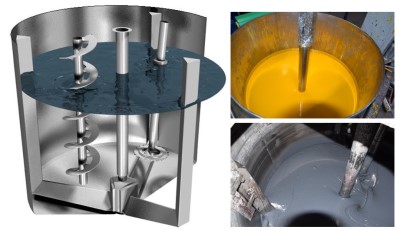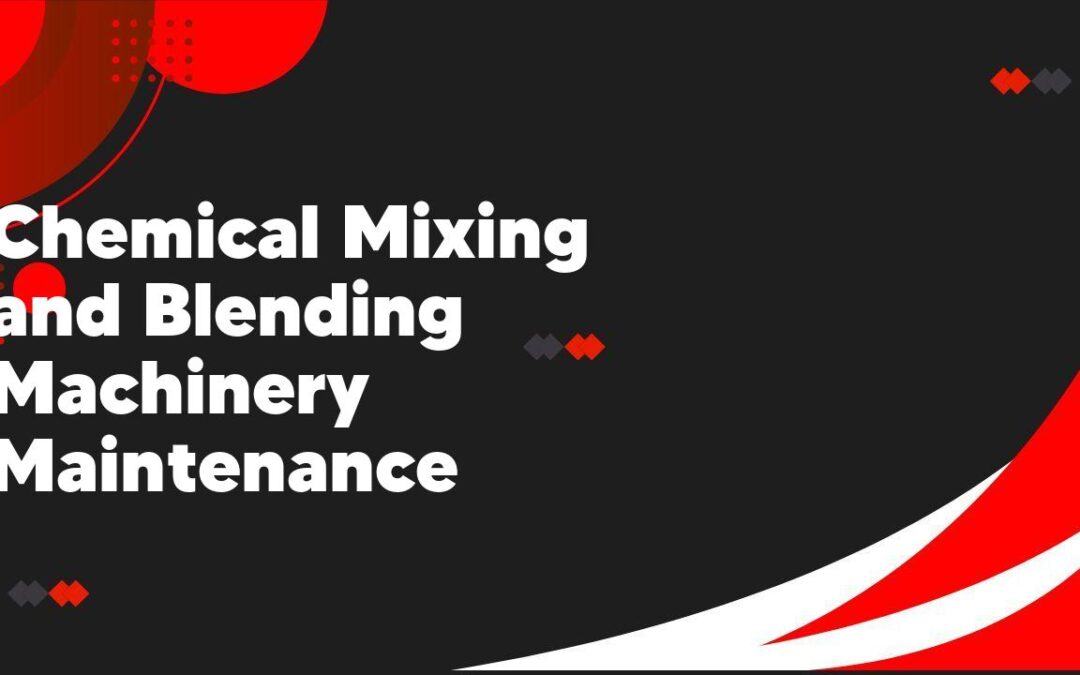In this article, we will explore the importance of proper maintenance for chemical mixing and blending machinery. Chemical mixing and blending machinery is crucial in industries such as pharmaceuticals, food processing, and manufacturing. Neglecting maintenance can lead to equipment breakdowns, production delays, and even potential safety hazards.
1. Importance of Regular Maintenance for Chemical Mixing and Blending Machinery
Regular maintenance is crucial for ensuring the smooth operation of chemical mixing and blending machinery. As someone who has worked with such equipment for years, I have witnessed firsthand the detrimental effects of neglecting maintenance. Without routine inspections and maintenance, machinery can become inefficient, leading to lower production rates and compromised product quality. Additionally, failing to address minor issues in a timely manner can escalate into major problems, which can be costly to repair and result in prolonged downtime. Therefore, prioritizing regular maintenance is not only essential for maximizing productivity and efficiency, but it also contributes to ensuring the safety of the operators and preventing any potential accidents or hazards.
2. Common Maintenance Challenges Faced in Chemical Mixing and Blending Machinery

As a chemical engineer, I have encountered numerous maintenance challenges in the field of chemical mixing and blending machinery. One common issue that arises is the buildup of residue and deposits within the equipment. These deposits can negatively impact the efficiency and performance of the machinery, leading to decreased productivity and increased downtime. Another challenge is the wear and tear experienced by the components of the machinery over time. The constant exposure to harsh chemicals and high temperatures can cause corrosion and erosion, resulting in the need for frequent repairs and replacements. Furthermore, ensuring proper lubrication and alignment of the machinery is essential to prevent mechanical failures and breakdowns. These maintenance challenges must be addressed promptly and effectively to ensure smooth operations and optimal performance in the chemical industry.
3. Key Components to Monitor and Maintain in Chemical Mixing and Blending Machinery
In terms of chemical mixing and blending machinery, there are three key components that must be continuously monitored and maintained to ensure optimum performance. The first component is the agitator, which plays a crucial role in mixing and homogenizing the chemicals. Regular inspection and lubrication of the agitator shaft and bearings are necessary to prevent any mechanical failures. The second component is the vessel or tank, where the mixing and blending process takes place. It is essential to regularly check for any leaks, cracks, or corrosion, as these can compromise the integrity of the chemical mixture. Lastly, the control system of the machinery should be closely monitored to ensure the correct parameters, such as temperature and pressure, are maintained for the desired chemical reaction. Regular maintenance and calibration of the control system are vital to avoid any deviations that could result in inefficient mixing or even hazardous situations.
4. Best Practices for Cleaning and Lubricating Chemical Mixing and Blending Machinery
As someone who has worked with chemical mixing and blending machinery for several years, I have come to understand the importance of regularly cleaning and lubricating these machines. Regular maintenance not only ensures the longevity of the equipment but also improves its performance. To clean the machinery, I recommend using a mild detergent and warm water solution, carefully wiping away any residue or build-up. It is crucial to ensure that all parts are completely dry before reassembling the machine. Lubrication is equally important, as it minimizes friction and prevents wear and tear. I suggest using a high-quality lubricant specifically designed for use with chemical mixing and blending machinery. Applying the lubricant to all moving parts and following the manufacturer’s guidelines for the appropriate intervals will significantly enhance the machine’s efficiency and reliability.
5. Preventive Maintenance Tips for Extending the Lifespan of Chemical Mixing and Blending Machinery
In my experience as a chemical engineer, I have found that regular preventive maintenance is crucial for extending the lifespan of chemical mixing and blending machinery. Firstly, it is essential to keep the machinery clean and free from any residual chemicals or contaminants. This can be done by thoroughly cleaning the equipment after each use and conducting regular inspections to identify any signs of wear or damage. Secondly, lubrication of moving parts is crucial to prevent friction and ensure smooth operation. Applying lubricants according to the manufacturer’s guidelines and regularly checking and replacing them is essential. Additionally, monitoring and maintaining proper alignment of the machinery’s components is crucial to prevent excessive vibration and prolong its lifespan. Lastly, keeping detailed records of maintenance activities and scheduling regular inspections by trained professionals can help identify potential issues early on and prevent costly breakdowns. By following these preventive maintenance tips, we can ensure the efficiency and durability of chemical mixing and blending machinery.
6. Troubleshooting Guide for Common Issues in Chemical Mixing and Blending Machinery
When it comes to using chemical mixing and blending machinery, it is important to be aware of the common issues that may arise and how to troubleshoot them. One common issue is leakage, which can occur due to worn-out seals or gaskets. If this happens, it is crucial to replace them as soon as possible to prevent any leaks that could potentially be hazardous. Another problem that can occur is poor mixing or blending performance. This can be caused by factors such as incorrect speed settings or improper alignment of the blades. It is important to check these factors and make adjustments accordingly to ensure optimal performance. Additionally, noise and vibration can be an issue, which can be caused by faulty bearings or misalignment. Regular maintenance and inspections are key to identifying and resolving these issues promptly.
Conclusion
In conclusion, proper maintenance of chemical mixing and blending machinery is essential for ensuring safe and efficient operations. Regular inspection and cleaning of the machinery can prevent the buildup of contaminants and avoid potential accidents. By following recommended maintenance procedures, companies can minimize downtime, extend the lifespan of their equipment, and ultimately improve their overall productivity.
1. How often should I clean my chemical mixing and blending machinery?
It is recommended to clean your machinery after each use to prevent any residue build-up and ensure optimal performance.
2. What cleaning solutions should I use for my machinery?
It is best to use mild detergents or cleaners that are specifically designed for cleaning chemical mixing and blending machinery. Avoid using harsh chemicals that may damage the equipment.
3. How often should I lubricate the moving parts of my machinery?
Regular lubrication is essential for the proper functioning of your machinery. It is recommended to lubricate the moving parts at least once a month or as specified by the manufacturer.
4. Can I use my machinery for mixing and blending different types of chemicals?
Yes, most chemical mixing and blending machinery are designed to handle a variety of chemicals. However, it is important to thoroughly clean the machinery between different chemical mixes to prevent cross-contamination.
5. How can I troubleshoot common issues with my machinery?
If you encounter any issues with your machinery, refer to the manufacturer’s manual for troubleshooting tips. If the problem persists, it is recommended to contact a professional technician or the manufacturer’s customer support for assistance.
6. Are there any safety precautions I should take while operating the machinery?
Yes, always follow the safety guidelines provided by the manufacturer. This may include wearing protective gear, such as goggles and gloves, and ensuring proper ventilation in the working area. Additionally, make sure to turn off the machinery and unplug it when not in use to prevent any accidents.

